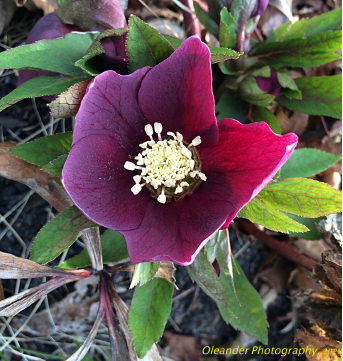See Question
Answer: Hellebore
Explore This Issue
ACEP Now: Vol 39 – No 04 – April 2020Helleborus is derived from two Greek words: bora, meaning food, and helein, meaning injures/destroys.
Toxins
Hellebore contains glycosides variously named helleborin, hellebrin, and helleborigenin, which are bufadienolides (similar to toad toxin). It also contains other compounds including protoanemonin, flavonoids, phenolic acids, saponins, and ecdysteroids in varying amounts depending on the species.
Toxic Effects
Cardiac glycoside effects predominate, with severe nausea, vomiting, diarrhea, very slow heart rates, arrhythmias, and potentially death. The sap also is a skin irritant, and prolonged skin contact may cause burning.
Phytoecdysteroids can mimic the activity of molting hormones in insects, disrupting molting and stopping normal insect development.
Properties of the Plant

Hellebore
Helleborus orientalis
Common names: Christmas rose, Lenten rose
These beautiful examples of hellebore flowers show the variety of colors in the bloom. The colored parts of the flower are “septals,” which are modified leaves—not petals—so they remain on the plant for weeks to months. It is an evergreen rhizomatous perennial that flowers in the colder seasons. It grows in clumps that produce two or three large nodding flowers.
Historical Notes
In the days of Hippocrates, hellebore was used to treat gout, paralysis, insanity, and other diseases. Some historians believe a lethal overdose of hellebore had a role in ending the life of Alexander the Great.
In 585 BC, the Greek army poisoned the water supply to the city of Kirrha by adding massive amounts of crushed hellebore leaves. The citizens were overcome by illness―chemical warfare was alive and well in the ancient world.
Some varieties of hellebore were used to treat worms in children, the idea being to expel the worms by vomiting.






No Responses to “Toxicology Answer: What Flower Did the Greek Army Use Against a City?”